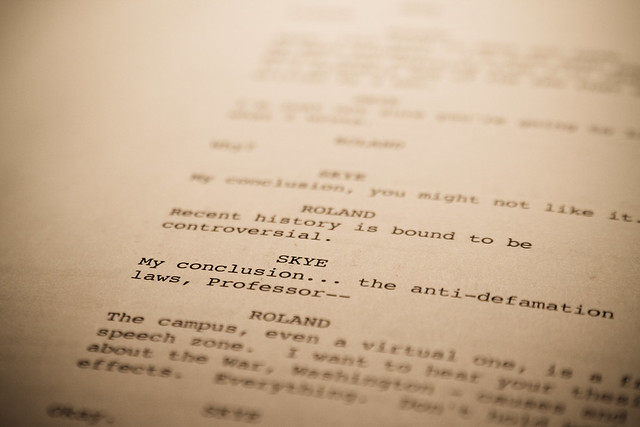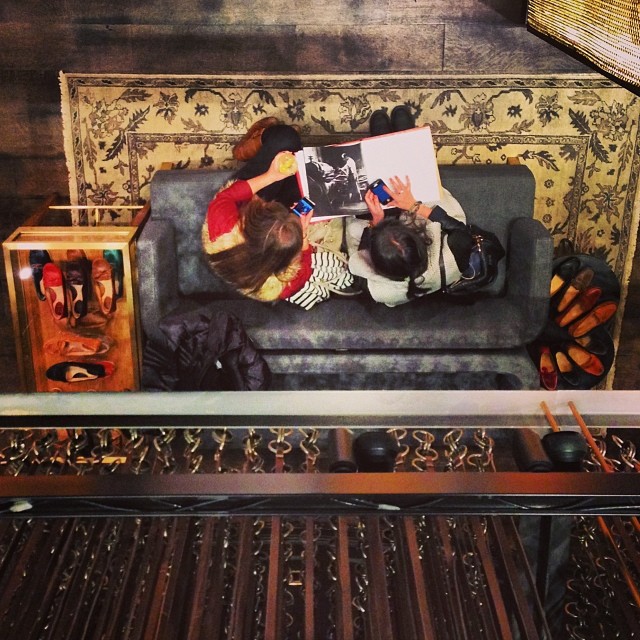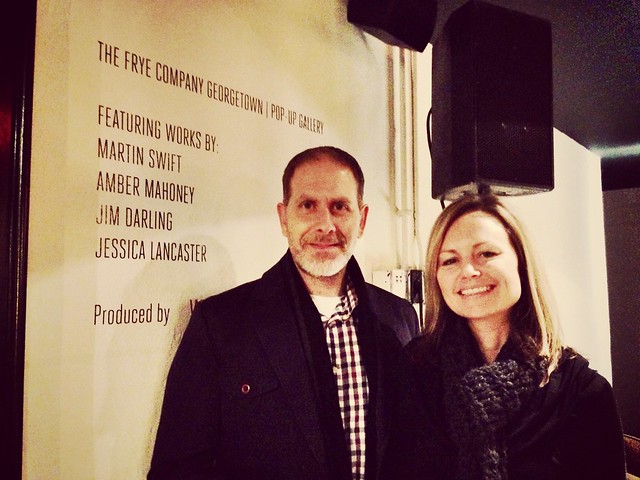
I had the opportunity to be a part of DC Shorts Mentors, joining Joy Cheriel Brown, Greg Tindale and John Hutson in a panel on screenwriting. DC Shorts Mentors is a four-week long workshop on how to write, edit, produce and market a film.
On the panel, we spoke about our background in screenwriting. I primarily discussed my experience as a judge for the DC Shorts Screenplay Competition, sharing what we looked for in terms of a short script. A good story is the most important requirement, one that starts out with a problem and works its way through it. Using the proper screenplay format is necessary for the simple reason that scripts are really hard to read without it.
We don’t want bad Tarantino. You have a unique story to tell. Write your script, not some imitation of someone else.
For example, Five Days in Calcutta, which won the DC Shorts Screenplay Competition, is an example of a simple premise – two cranky old men bickering – that’s funny, well-executed and unique.
Joy and I also really liked DC Shorts finalist The Goblin Baby, a script that has the quality of a really dark fairy tale, one of those scripts that is very personal but with the universal themes of loss and horror. Writer Shoshana Rosenbaum just wrapped-up filming this short so hopefully we’ll see it at the DC Shorts Film Festival in September.
Next came the questions, which arrived fast and furious from the assembled class at Gibson Guitar Room – they asked about screenplay format, screenplay software (use Final Draft or Celx) story structure, books, classes, screenplay direction and a million other topics.
Next, the writers had to write. We gave them an hour to write a short script, with my fellow mentors there to work one-on-one with writers. That was fascinating. Some people squirreled themselves away and began writing. Others needed some help getting started.
After lunch, Greg led a crew of actors in a live reading of short scripts submitted from the class. Writers had a chance to hear their work read aloud before a live audience, as well as get feedback from their fellow writers and the actors – an invaluable experience. They got to see how actors can shape their words as they applied their craft. A good script must give the actors room to make decisions – not on the words, but in how actors deliver lines, stage direction and so on. Words on a page can sound very different when read aloud before an audience.
Film is an inherently collaborative medium. The word is not sacrosanct. If you’re a screenwriter, your work is likely to be changed by writers, producers, directors, actors, editors, just about everyone. Something to know before you begin.
But to write a screenplay, you have to actually write a screenplay – that was my advice to the aspiring filmmakers at DC Shorts Mentors. You can read books about screenwriting, take classes, hire consultants… but eventually you have to sit down and write. There’s no substitute for that.
You can still get tickets for DC Shorts Mentors, which runs until March 30. And don’t forget to enter the DC Shorts Screenplay Competition. The regular deadline is April 30.










